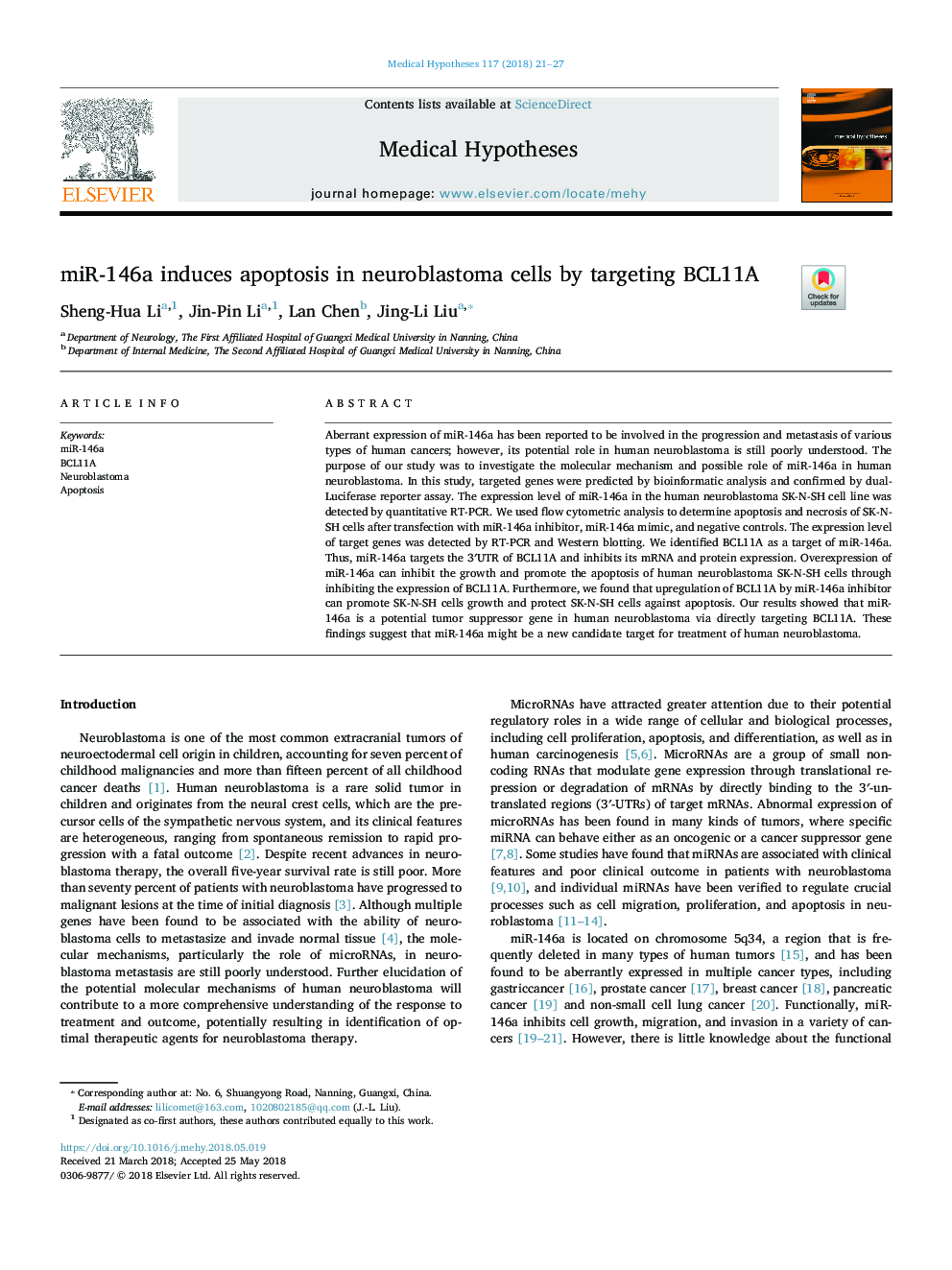| Article ID | Journal | Published Year | Pages | File Type |
|---|---|---|---|---|
| 8515381 | Medical Hypotheses | 2018 | 7 Pages |
Abstract
Aberrant expression of miR-146a has been reported to be involved in the progression and metastasis of various types of human cancers; however, its potential role in human neuroblastoma is still poorly understood. The purpose of our study was to investigate the molecular mechanism and possible role of miR-146a in human neuroblastoma. In this study, targeted genes were predicted by bioinformatic analysis and confirmed by dual-Luciferase reporter assay. The expression level of miR-146a in the human neuroblastoma SK-N-SH cell line was detected by quantitative RT-PCR. We used flow cytometric analysis to determine apoptosis and necrosis of SK-N-SH cells after transfection with miR-146a inhibitor, miR-146a mimic, and negative controls. The expression level of target genes was detected by RT-PCR and Western blotting. We identified BCL11A as a target of miR-146a. Thus, miR-146a targets the 3â²UTR of BCL11A and inhibits its mRNA and protein expression. Overexpression of miR-146a can inhibit the growth and promote the apoptosis of human neuroblastoma SK-N-SH cells through inhibiting the expression of BCL11A. Furthermore, we found that upregulation of BCL11A by miR-146a inhibitor can promote SK-N-SH cells growth and protect SK-N-SH cells against apoptosis. Our results showed that miR-146a is a potential tumor suppressor gene in human neuroblastoma via directly targeting BCL11A. These findings suggest that miR-146a might be a new candidate target for treatment of human neuroblastoma.
Keywords
Related Topics
Life Sciences
Biochemistry, Genetics and Molecular Biology
Developmental Biology
Authors
Sheng-Hua Li, Jin-Pin Li, Lan Chen, Jing-Li Liu,
